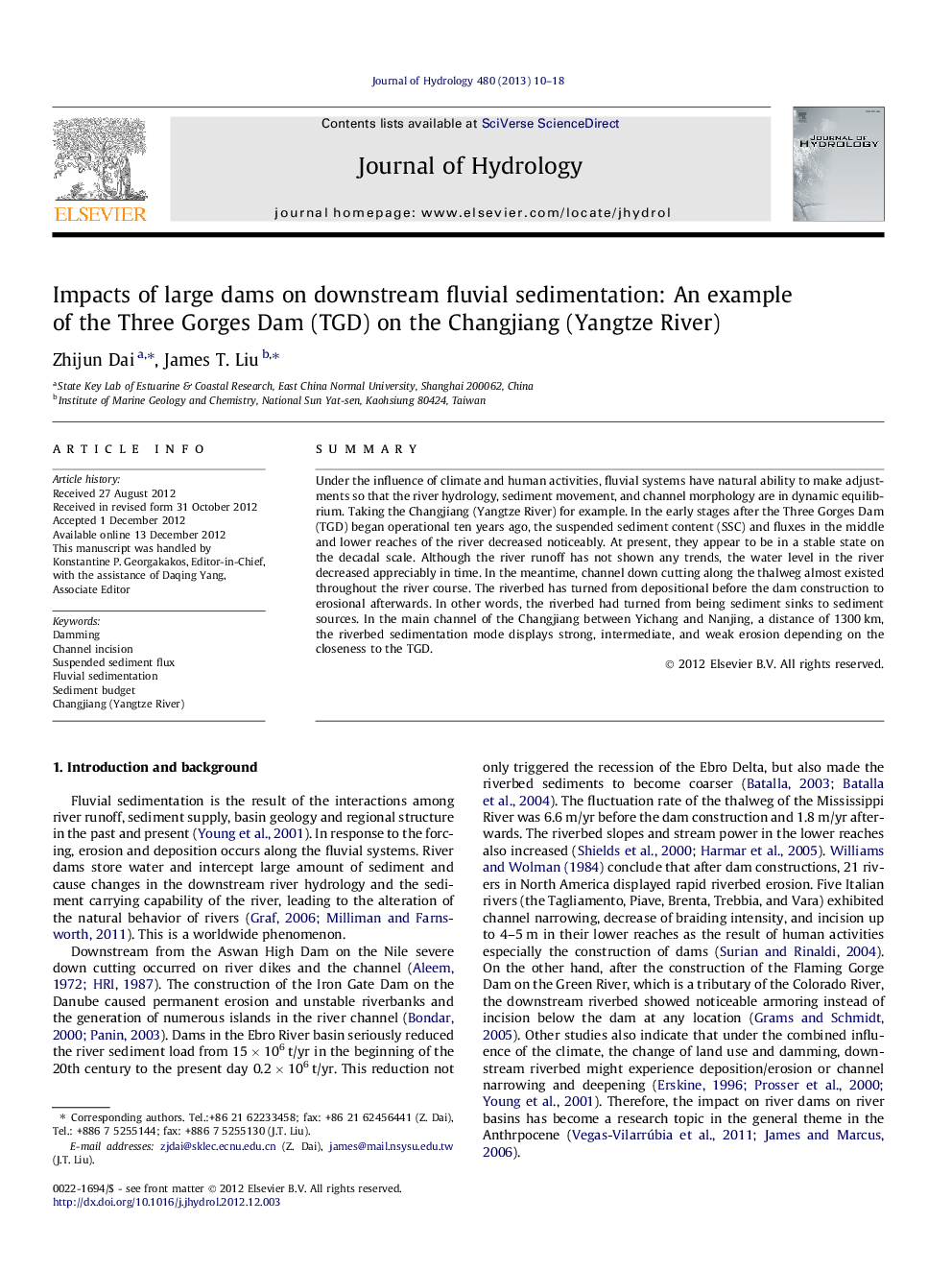| Article ID | Journal | Published Year | Pages | File Type |
|---|---|---|---|---|
| 4576358 | Journal of Hydrology | 2013 | 9 Pages |
SummaryUnder the influence of climate and human activities, fluvial systems have natural ability to make adjustments so that the river hydrology, sediment movement, and channel morphology are in dynamic equilibrium. Taking the Changjiang (Yangtze River) for example. In the early stages after the Three Gorges Dam (TGD) began operational ten years ago, the suspended sediment content (SSC) and fluxes in the middle and lower reaches of the river decreased noticeably. At present, they appear to be in a stable state on the decadal scale. Although the river runoff has not shown any trends, the water level in the river decreased appreciably in time. In the meantime, channel down cutting along the thalweg almost existed throughout the river course. The riverbed has turned from depositional before the dam construction to erosional afterwards. In other words, the riverbed had turned from being sediment sinks to sediment sources. In the main channel of the Changjiang between Yichang and Nanjing, a distance of 1300 km, the riverbed sedimentation mode displays strong, intermediate, and weak erosion depending on the closeness to the TGD.
Graphical abstractFigure optionsDownload full-size imageDownload as PowerPoint slideHighlights► Changjiang water level had obvious decrease in the past 10 years. ► Thelweg down cutting occurred along the river course downstream from the TDG. ► Suspended sediment flux along Changjiang has basically stabilized in the past 10 years. ► The riverbed deposition mode displays strong, intermediate, and weak erosion.
